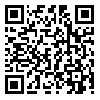Volume 16, Issue 3 (12-2018)
sjsph 2018, 16(3): 216-227 |
Back to browse issues page
Download citation:
BibTeX | RIS | EndNote | Medlars | ProCite | Reference Manager | RefWorks
Send citation to:



BibTeX | RIS | EndNote | Medlars | ProCite | Reference Manager | RefWorks
Send citation to:
Yahyavi Dizaj J, Emamgholipour S, Pourreza A, Nommani F, Molemi S. Effect of Aging on Catastrophic Health Expenditure in Iran During the Period 2007-2016. sjsph 2018; 16 (3) :216-227
URL: http://sjsph.tums.ac.ir/article-1-5674-en.html
URL: http://sjsph.tums.ac.ir/article-1-5674-en.html
Jafar Yahyavi Dizaj1 
 , Sara Emamgholipour2
, Sara Emamgholipour2 
 , Abolghasem Pourreza *
, Abolghasem Pourreza * 
 3, Farogh Nommani1
3, Farogh Nommani1 
 , Somayeh Molemi4
, Somayeh Molemi4 


 , Sara Emamgholipour2
, Sara Emamgholipour2 
 , Abolghasem Pourreza *
, Abolghasem Pourreza * 
 3, Farogh Nommani1
3, Farogh Nommani1 
 , Somayeh Molemi4
, Somayeh Molemi4 

1- MSc. Student, Department of Health Management and Economics, School of Public Health, Tehran University of Medical Sciences, Tehran, Iran
2- Ph.D. Assistant Professor, Department of Health Management and Economics, School of Public Health, Tehran, Iran
3- Ph.D. Professor, Department of Health Management and Economics, School of Public Health, Tehran University of Medical Sciences, Tehran, Iran ,porrezaa@tums.ac.ir
4- MSc. Student, Department of Health Economics, School of Management and Medical Informatics, Shiraz University of Medical Sciences, Shiraz, Iran
2- Ph.D. Assistant Professor, Department of Health Management and Economics, School of Public Health, Tehran, Iran
3- Ph.D. Professor, Department of Health Management and Economics, School of Public Health, Tehran University of Medical Sciences, Tehran, Iran ,
4- MSc. Student, Department of Health Economics, School of Management and Medical Informatics, Shiraz University of Medical Sciences, Shiraz, Iran
Abstract: (5038 Views)
Background and Aims: Population aging is one of the most important economic, social and health challenges of the twenty-first century. The increasing rate of aging in the population will increase the risk of households being confronted with catastrophic health expenditure (CHE). The purpose of this study was to determine the effect of aging on households' CHE in Iran.
Materials and Methods: The data on household income-expenditure were obtained from the annual Iranian Statistical Center reports for the period 2007-2016. The statistical technique used for data analysis was the regression Logit technique, the software for the final data analysis being the Excel and STATA.
Result: The results showed that increased numbers of elderly people in a household would increase the probability of the household being confronted with CHE. Additionally, the following households were also more likely to be at risk of CHE: urban families; female-headed families; those not owning private homes; those with no income or with an unemployed head; and those in the lower income deciles. Moreover, no insurance coverage would decrease the likelihood of a household to be at risk of CHE.
Conclusion: Considering the findings of this study and the aging of the Iranian population, it is essential that the government, in line with fair financing and reducing the economic burden of health expenditures on households with an elderly member, try, through special support packages for the elderly, to prevent confrontation of such families with catastrophic health expenditures.
Materials and Methods: The data on household income-expenditure were obtained from the annual Iranian Statistical Center reports for the period 2007-2016. The statistical technique used for data analysis was the regression Logit technique, the software for the final data analysis being the Excel and STATA.
Result: The results showed that increased numbers of elderly people in a household would increase the probability of the household being confronted with CHE. Additionally, the following households were also more likely to be at risk of CHE: urban families; female-headed families; those not owning private homes; those with no income or with an unemployed head; and those in the lower income deciles. Moreover, no insurance coverage would decrease the likelihood of a household to be at risk of CHE.
Conclusion: Considering the findings of this study and the aging of the Iranian population, it is essential that the government, in line with fair financing and reducing the economic burden of health expenditures on households with an elderly member, try, through special support packages for the elderly, to prevent confrontation of such families with catastrophic health expenditures.
Type of Study: Research |
Subject:
Public Health
Received: 2018/12/16 | Accepted: 2018/12/16 | Published: 2018/12/16
Received: 2018/12/16 | Accepted: 2018/12/16 | Published: 2018/12/16
Send email to the article author
| Rights and permissions | |
 |
This work is licensed under a Creative Commons Attribution-NonCommercial 4.0 International License. |



